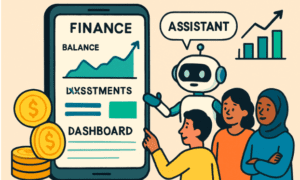Introduction:
The emergence of autonomous vehicles stands out as a transformative force. These self-driving wonders are not merely a technological marvel; they have the potential to revolutionize how we move within our cities. The impact of autonomous vehicles on urban mobility extends far beyond the confines of a mere transportation breakthrough. In this article, we will delve into the multifaceted effects of autonomous vehicles, exploring their influence on traffic patterns, safety, accessibility, and the very fabric of urban living.
Changing Traffic Dynamics:
One of the most immediate and tangible impacts of autonomous vehicles is the transformation of traffic dynamics. Conventional traffic congestion may become a relic of the past as these self-driving vehicles communicate seamlessly with each other, optimizing traffic flow. With advanced sensors and artificial intelligence at the helm, autonomous vehicles can navigate intricate traffic scenarios more efficiently than their human-driven counterparts, leading to a potential reduction in traffic jams.
Safety Revolution:
Safety has always been a paramount concern in transportation, and autonomous vehicles have the potential to significantly enhance it. Equipped with cutting-edge technology such as lidar sensors, radar systems, and advanced cameras, these vehicles can detect obstacles, pedestrians, and other vehicles with unparalleled precision. The elimination of human error, a leading cause of accidents, holds the promise of drastically reducing road fatalities and injuries. As autonomous vehicles become more prevalent, our streets may evolve into safer spaces for both pedestrians and drivers.
Accessibility for All:
Autonomous vehicles have the potential to democratize transportation by enhancing accessibility for individuals with mobility challenges. The elderly and people with disabilities stand to benefit immensely from the independence offered by self-driving cars. These vehicles can be adapted to accommodate various accessibility needs, providing a newfound sense of freedom and mobility to those who may have been traditionally restricted in their movements. The societal impact of increased accessibility is immeasurable, fostering a more inclusive urban environment.
Environmental Implications:
Beyond their immediate benefits, the widespread adoption of autonomous vehicles could usher in a new era of environmentally conscious transportation. The potential for optimized traffic flow and reduced congestion translates into lower fuel consumption and decreased emissions. Moreover, the advent of electric and hybrid autonomous vehicles could further mitigate the environmental impact of traditional combustion engines. As urban areas grapple with pollution and climate change, the green potential of autonomous transportation becomes a crucial factor in shaping sustainable cities.
Economic Shifts and Job Landscape:
The rise of autonomous vehicles is not without its challenges, particularly concerning the job landscape. As automation takes center stage, traditional roles in transportation, such as taxi and truck drivers, may undergo significant transformations. However, with every challenge comes opportunity. The development, maintenance, and operation of autonomous vehicle fleets will create new job categories, fostering a shift in the economic landscape. Skilled workers in artificial intelligence, robotics, and software development will be in high demand, aligning with the evolving needs of the transportation industry.
Cultural and Urban Planning Shifts:
The integration of autonomous vehicles into urban landscapes prompts a reevaluation of city planning and cultural norms. Parking spaces, once a dominant feature of urban architecture, may become obsolete as autonomous vehicles engage in continuous movement or find designated charging stations. This shift could open up new possibilities for urban design, repurposing parking lots into green spaces, recreational areas, or even affordable housing. The very fabric of our cities may evolve to prioritize people over parking.
Public Perception and Trust:
While the technological advancements behind autonomous vehicles are impressive, public perception and trust remain significant hurdles to widespread adoption. Building confidence in the safety and reliability of self-driving cars requires transparent communication from developers and regulatory bodies. Moreover, the implementation of rigorous testing and safety standards will play a crucial role in reassuring the public. As acceptance grows, the societal benefits of autonomous vehicles can be fully realized.
Conclusion:
The impact of autonomous vehicles on urban mobility extends far beyond the realm of transportation. From reshaping traffic dynamics to revolutionizing safety, accessibility, and environmental sustainability, self-driving cars represent a paradigm shift in how we navigate and inhabit our cities. As we stand on the cusp of this transportation revolution, the challenges and opportunities it presents call for a collaborative effort from technology developers, policymakers, and the public. Embracing the potential of autonomous vehicles could pave the way for smarter, safer, and more sustainable urban living. The future of transportation is autonomous, and its ripple effects will shape the cities of tomorrow.



































